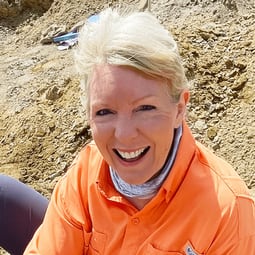
Susan Richardson
Arthur Sease Williams Professor, Department of Chemistry & Biochemistry, University of South Carolina, USA
False

Arthur Sease Williams Professor, Department of Chemistry & Biochemistry, University of South Carolina, USA
A problem interdisciplinarians should tackle? A chemist alone is unable to understand which drinking water disinfection by-products (DBPs) are the most important to focus on. Interdisciplinary work can help us find a solution.
The secret to a successful interdisciplinary collaboration… Understanding the needs of each discipline involved in your work. For example, toxicologists need more materials than chemists and need to perform more replicates – requiring adjustments to extraction techniques. Being open to compromises is key to making the process work. It’s also important to work with someone that you trust. I’ve been blessed through my career to collaborate with some wonderful people across a variety of disciplines (from engineers to epidemiologists), who have been tremendous colleagues.
The decade’s most important development? I hope it’s OK if l answer this as to the most important discoveries I have made. Firstly, together with Michael Plewa’s group, we discovered the drivers of toxicity in drinking water: haloacetonitriles and iodoacetic acids (two classes of DBPs). These compounds are more toxic and present in higher quantities than per- and polyfluorinated alkyl substances (PFAS), which have gained considerable attention from the public and the EPA. Therefore, it is important to consider regulating haloacetonitriles and iodoacetic acids in order to ensure water safety.
We also made an important discovery using a sensitive GC-mass spectrometer (LECO Pegasus BT 4D GCxGC time of flight mass spectrometer) regarding a new class of compounds called halo cyclopentadienes – part of disinfection byproducts (DBPs), which were previously unnoticed due to their larger molecular weight. They are the first DBPs found to have the ability to accumulate in living organisms. Our research, led by Jiafu Li, a former PhD student, also revealed that these halo cyclopentadienes are the most toxic DBPs discovered so far.
Biggest challenge facing the field? We need to address the challenge of dealing with high molecular weight DBP’s that our current technology fails to detect.
Receive the latest pathologist news, personalities, education, and career development – weekly to your inbox.

False
False
False